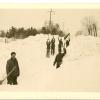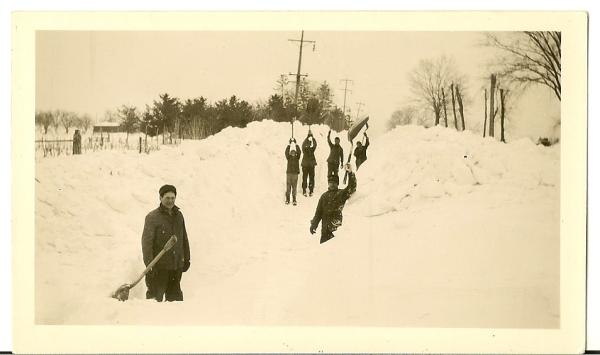Comparing Climates
| Grade | 6th Grade | Class | Length of Lesson | 50 minutes |
| Lesson Title | Comparing Climates |
| Unit Title | Iowa vs. Regions of the World |
| Unit Compelling Question | Why would someone choose to live in Iowa? |
| Historical Context: Students will read an informational text accompanied by a historic photo of the 1936 blizzards in Iowa. While the photo demonstrates an extreme of Iowa's climate, it is easy to understand what is happening in the image. Iowa experiences four distinct seasons throughout the year: summer is very hot and humid, temperature drop in the fall, winter is extremely cold with snow throughout, and spring brings rain and warmer temperatures. During the winter of 1936, a series of blizzards struck Iowa. Many towns were forced to shut down completely due to giant snow drifts caused by heavy snowfall and strong winds. Across the state, trains were halted, schools were closed, and roads into towns were impassable. Iowans worked together to shovel and remove snow from roads to allow people to enter town. Some people consider the winter of 1936 to be the worst winter in Iowa's modern history. |
|
| Lesson Supporting Question | |
| Lesson Overview | Students will examine authentic photos of Iowa, Mexico, England, and Japan to determine the climate in each place. Student will read an information text to learn about the seasonal patterns, natural disasters, and other weather averages of Iowa and regions around the world. |
| Primary Sources Used |
|
| Resources Needed | Printed worksheets Printed informational handouts |
| Standard | |
| Lesson Target | Students will be better able to gather relevant information from primary and secondary sources and explain the climate of the state of Iowa. |
| Lesson Themes | Environments, Natural Disasters, Weather |
|
| Formative Assessment (How will you use the formative assessments to monitor and inform instruction?) |
Large group discussions should allow all students to demonstrate the understanding of the text and images. |
| Summative Assessment (How does the lesson connect to planned summative assessment(s)?) |
Accurately completed worksheets that are similar to the key provided indicate that this lesson was a success. |
| Author | Shelby Nelsen | Created | Last Edited | ||||
| Reviewer: N/A | |||||||
| Lesson Plan Development Notes: developed by a museum educator | |||||||


